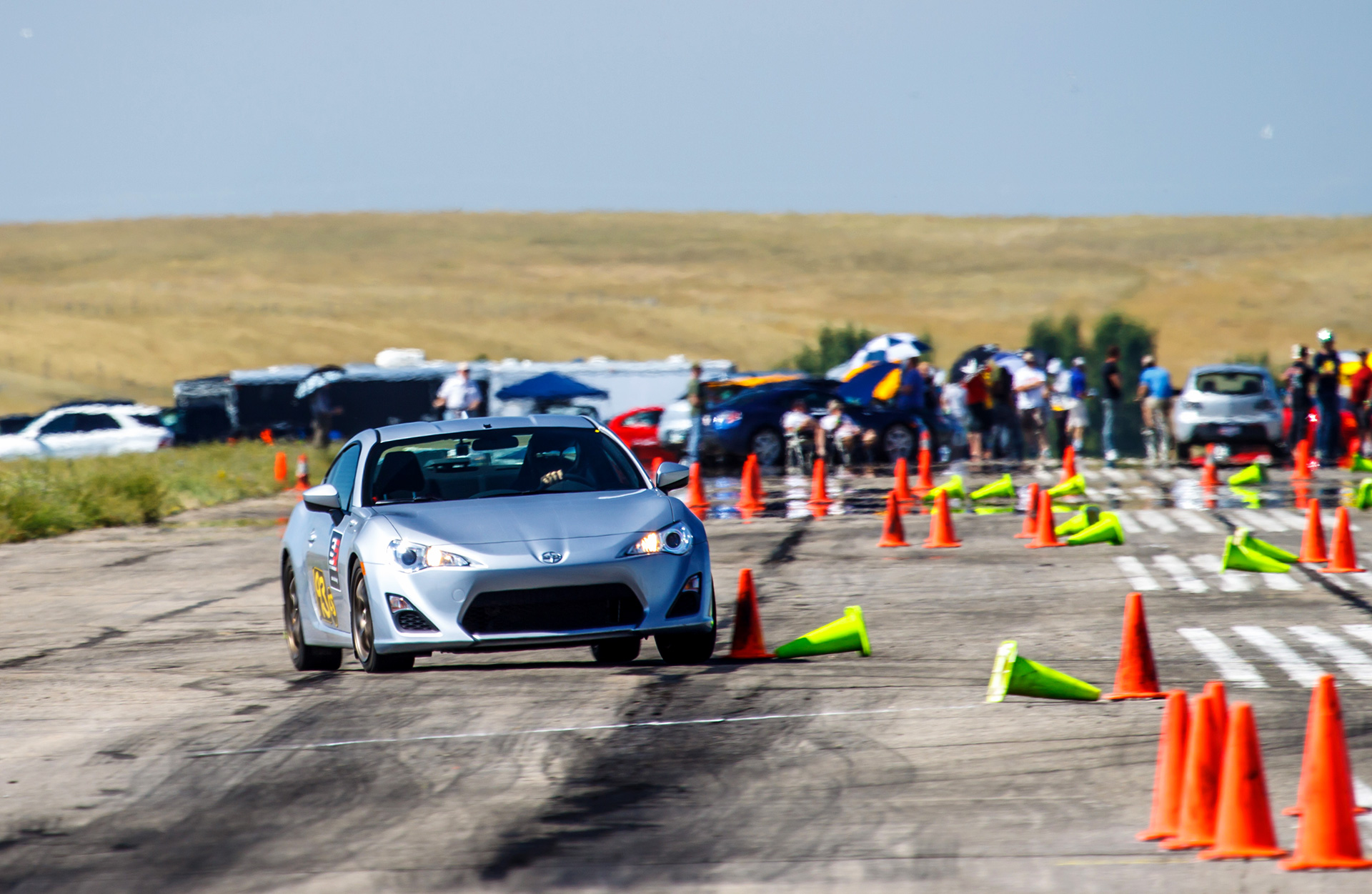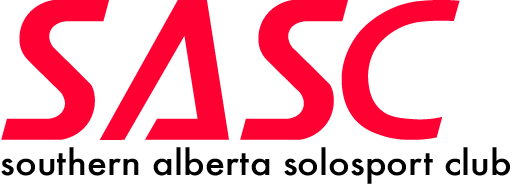What is Autocross

Autocross (also called “Solo”, “Auto-x” or “Autoslalom”) is a timed competition in which drivers navigate one at a time through a defined course on either a concrete or asphalt surface. It is a form of motorsports that emphasizes safe competition and active participation. Autocross differs from road racing and oval racing in that generally there is only one car on the track, driving against the clock rather than other cars. As an entry-level motorsport, it can provide a stepping stone for drivers looking to move into other more competitive and possibly expensive forms of racing (such as rallying, rallycross and circuit racing).
Autocross courses are typically one to two kilometers long and tend to place demands on car handling and driver skill rather than on engine power and outright speed. Courses are typically temporary and marked by traffic cones or can be permanent tracks with approval by a motorsport body.
Events typically have many classes that allow almost any vehicle, from economy sedans to purpose-built racing cars, to compete. Due to the nature of a typical track, speeds can be slower when compared to other forms of motorsports, usually not exceeding highway speeds, but the activity level (measured in discrete turns per minute) can be higher than even Formula One due to a large number of elements packed into each course.
Source: https://en.wikipedia.org/wiki/Autocross
Autocross is a volunteer-based sport, in order to be able to compete in events everyone must also be willing to work. Days are typically broken up into heats and for every heat that you compete in you must also work a heat. It is thanks to this that events are very affordable.
What Autocross is Not
Hooning, stunting, drifting, burnouts, etc. We do not tolerate any of this type of behavior at any of our events. Anyone engaged in such behavior will be asked to leave immediately and not welcome back. This includes nearby roadways.
Frequently Asked Questions
What to do and bring
If it’s your first time attending an autocross event we strongly recommend that you bring the following items with you?
- Drinking water
- Snacks & lunch
- Umbrella
- Sunscreen
- Bug spray
- Adequate clothing (dress for the weather)
- Closed-toe, thin sole shoes (runners, racing shoes, etc.)
- Tire pressure gauge
- An air compressor or air tank
- Painters tape (all drivers will be assigned a number prior to competition)
- White shoe polish or tire chalk (it is beneficial to see if the tire is rolling over during cornering)
- Helmet
- Pad of paper and pen to take notes
You should also make sure that your vehicle is safe for competition, we strongly recommend the following at a minimum:
- A recent inspection by a licensed mechanic ensuring that brake, suspension, and steering components are in good working order
- Tire tread is of sufficient depth across the tire
- Batteries are securely fastened (bungee cords are not acceptable)
- There are no leaks of any vehicle fluids
- Wheels have been recently torqued in accordance with the manufacturer’s specifications
- No loose items in the car including floormats (items can become projectiles if not secured and could even become lodged under the brake pedal)
*The SASC accepts no liability for any damage sustained to a car or its driver during an event*
Insurance at Events
While competing at an autocross event your regular vehicle insurance does not protect you or your car. In the event of an incident or collision attempting to file a claim with your automotive insurance company is considered insurance fraud which is a criminal offence. The SASC will cooperate with insurance companies in the event of an incident. If anyone is found guilty of trying to file a claim with their insurance company after an incident while competing they will be banned from competing in any motorsports events sanctioned by the WCMA.
The SASC carries general liability insurance which protects spectators and the venue, it does not protect your car. The SASC accepts no liability for any damage sustained to a car or its driver during an event.
SASC Sound Policy
As noise pollution is the #1 reason for clubs losing access to venues across North America the SASC has imposed a strict sound policy that everyone must adhere to.
The measurement will be taken at a point where the vehicle can reasonably be expected to be under load at full throttle. The measuring point will be 50 feet from the edge of the course using an ANSI Type 2 sound meter set to “A” weighting, “Slow” response. The microphone will be placed 3-4 feet above ground level, positioned perpendicular to vehicle direction of travel. Measurement will be taken at a minimum of 1 sound station but usually 2, rules apply for both stations.
If a vehicle registers a reading between 91.0-92.9dB the driver(s) will be given a courtesy warning that they are near the limit.
If a vehicle registers a reading at 93.0dB or greater the driver must make a mechanical change to the vehicle (ex. install a turn-down1, install a silencer, close an exhaust valve(s)2, etc.), the mechanical change must be shown to and accepted by the Event Chair or other SASC Executive member prior to the next run. A “mechanical delay” is permissible to make this change. If during the next run the driver(s) registers a second reading at 93.0dB or greater that vehicle will not be allowed to continue running (for both drivers in case of a two-driver car).
Vehicles that register below the 92.9dB maximum in the measured section(s) of the course but are found to be excessively loud (eg. exhaust backfire, tire squeal, etc.) in other sections of the course may also not be allowed to continue running if so deemed by the Event Chair or other SASC Executive member.
Please note that this also applies to showroom stock vehicles, we are aware that there are a very small handful of unmodified cars (ex. Porsche 911 GT3 and Ford Mustang 350R) that can exceed the 92.9dB maximum, these vehicles must still adhere to the sound policy.
Drivers of vehicles that blow over within their first two runs will receive their money back should they be unable to make a successful mechanical change and not able to continue their runs in a different vehicle. If the vehicle blows over after the first two runs refunds will not be issued.
Our sound policy is based on the SCCA’s which can be found in Appendix 1 of the rules located here: https://www.scca.com/pages/solo-cars-and-rules
1. Turndowns can only be installed pointing directly upwards, downwards, or rearwards, pointing the turndown 90° away from the sound meter is not allowed.
2. Exhaust valves that are adjustable electronically via the push of a button inside the vehicle are acceptable.
Tech Inspections
Prior to being allowed to compete in an event our Tech Steward or another club executive will conduct a quick check of your vehicle. This is a quick check only and by no means a replacement for a proper inspection conducted by a licensed mechanic. Some of the items checked are:
- Static brake pressure test
- No excessive wheel play
- Adequate tread depth
- No loose objects including floormats in the vehicle
- The battery is securely fastened (OEM or equivalent, no bungee cords)
- No visible leaks
- Helmets will also be checked to ensure they comply with the rules
Upon successful completion of a tech inspection, a sticker will be affixed to the inside of the windshield indicating that the car has been “teched”. The sticker is valid for the duration of the entire season.
The onus on ensuring the vehicle is safe and roadworthy is on the car owner and the SASC accepts no liability for any damage sustained to a car or its driver during an event.
Rules & Classing
SCCA (Sports Car Club of America) Regulations
The SASC piggybacks off of the Sports Car Club of America (SCCA)’s rules and car classing. These can be found here: https://www.scca.com/pages/solo-cars-and-rules
The SCCA rules dictate allowable vehicle modifications Section 13 to Section 20 as well as which cars belong in which classes in Appendix A.
Helmet Rules
Valid helmets for Autoslalom competition in the 2020 season are:
• FIA 8860-2004
• FIA 8860-2010
• FIA 8860-2015
• Snell 2020 SA, 2020M
• Snell 2015 SA, or 2015 M
• Snell 2010 SA, 2010 SAH, or 2010 M
• SFI Foundation 31.1/2015
• SFI Foundation 31.1/2010
• ECE R22.05 (10 years from manufacturing date of helmet)
Helmets homologated to Snell M and ECE R22.05 standard are not acceptable for use in vehicles equipped with roll cages.
All helmets must be inspected by either the Tech Steward or another club executive prior to a competitor being allowed to drive on course. A sticker is affixed to the back of the helmet demarking that it’s been checked and is allowable for use.
The SASC does have a very limited quantity of loaner helmets available at events however competitors are strongly encouraged to bring their own helmet as there are no guarantees that a loaner will be available for you.
